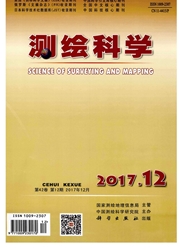

 中文摘要:
中文摘要:
针对传统统计数据无法准确、客观地测量区域能源消费碳排放量并展现地理分布差异的问题,该文提出利用DMSP/OLS卫星数据稳定夜间灯光数据和能源消费数据,模拟区域碳排放空间分布,揭示区域碳排放分布特征和规律。以河南省为研究区的分析结果表明:1995—2012年河南省能源消费碳排放总量逐年增加,郑州、洛阳和新乡市的能源消费碳排放量年均增长较快,三门峡、济源市的碳排放量增长较慢;2012年各地区能源消费碳排放强度高于1995年,18年间地均碳排放强度均呈现出明显的地域分布差异规律,主要集中在郑州、洛阳和安阳市区域内。基于夜间灯光数据模拟区域能源消费碳排放具有一定的可行性,该数据能比较可靠地反映区域能源消费碳排放的时空动态变化规律。
 英文摘要:
英文摘要:
In view of the problem that traditional statistical data cannot measure the regional carbon emissions from energy consumption and identify the distribution differences accurately, this paper used DMSP/OLS stable night light data to simulate the spatial distribution of carbon emissions and reveal the characteristics and rule of carbon emissions distribution. Taking Henan province as an example and the experimental results showed as follows, the carbon emission from energy consumption increase year by year from 1995 to 2012 in Henan province, which especially faster in Zhengzhou, Luoyang and Xinxiang city, meanwhile Sanmenxia and Jiyuan city increase slower; the carbon emissions intensity from energy consumption of each city in 2012 is higher than that in 1995 ; the carbon emission intensity present obvious regional distribution difference during 18 years, which concentrate in Zhengzhou, Luoyang and Anyang city. It's feasible to simulate the carbon emissions from energy consumption by DMSP/OLS nighttime light data; DMSP/OLS nighttime lights imagery is a reliable data that reflect the spatio-temporal dynamics of energy consumption.
 同期刊论文项目
同期刊论文项目
 同项目期刊论文
同项目期刊论文
 期刊信息
期刊信息
